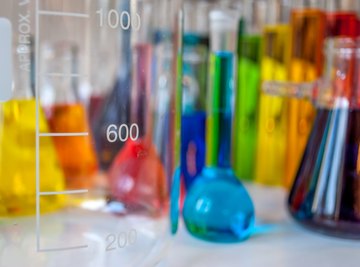how to determine the density of cooking oil Determine istock
Have you ever wondered what density is and how it affects the world around us? Today, we are going to explore the concept of density and conduct some easy density experiments and tricks that will amaze both kids and adults alike. Firstly, let’s understand what density actually means. Density is a physical property of matter that measures how much mass is packed into a given volume. In simpler terms, it determines how compact or spread out an object or substance is. The formula for density is quite simple: density = mass/volume. To help us visualize the concept of density, let’s consider an interesting experiment involving different liquids. Imagine creating a beautiful and colorful density column using liquids of different densities. The image accompanying this post shows a striking density column experiment using liquids such as oil, water, and syrup. This experiment not only looks visually appealing but also helps us understand how different liquids can stack on top of each other due to their varying densities. In this experiment, the liquids are carefully poured into a transparent container, one on top of the other, in a specific order. The liquid with the highest density, in this case, syrup, is poured at the bottom, followed by the liquid with the next highest density, which is water, and finally, the liquid with the lowest density, which is oil. As a result, the liquids form distinct layers, with each layer floating on top of the other due to their different densities. Now, let’s dive deeper into the properties of density. One interesting property is that substances with higher densities tend to sink in substances with lower densities. For example, if you drop a rock into a pond, it will sink because the rock is denser than the water. On the other hand, substances with lower densities tend to float on top of substances with higher densities. This is why oil, which is less dense than water, floats on top of water. To further explore this concept, let’s consider the density of different materials. The accompanying image displays a sample of vegetable oil with a density of 915 kg/m³. Can you imagine that? Vegetable oil is lighter than water, which has a density of about 1000 kg/m³. This is why oil floats on water. Now that we have a grasp of the concept of density, let’s move on to some easy density tricks and experiments that you can try at home. First, let’s conduct an experiment to determine the density of regular objects around us. For this experiment, you will need a measuring cylinder, water, and various objects of different shapes and sizes. 1. Fill the measuring cylinder with water and note down its initial volume. 2. Carefully drop one of the objects into the water and measure the increased volume. 3. Calculate the density of the object using the formula: density = mass/volume. Repeat these steps with multiple objects and compare their densities. You will be amazed to see that objects made of different materials have different densities. This experiment will not only provide a hands-on learning experience but also give you a chance to observe the concept of density in action. Another fascinating density trick involves creating a homemade lava lamp. For this trick, you will need a clear plastic bottle, water, vegetable oil, food coloring, and an effervescent tablet (such as Alka-Seltzer). 1. Fill the plastic bottle about two-thirds full with vegetable oil. 2. Add water to the bottle, leaving some space at the top. 3. Add a few drops of food coloring to the mixture. 4. Break an effervescent tablet into smaller pieces and drop them into the bottle. As the tablet reacts with the water, it releases gas bubbles that rise through the oil and create a mesmerizing effect similar to a lava lamp. This happens because the gas bubbles have a lower density than the water and oil, causing them to rise to the top. Once the gas bubbles reach the top, they pop and release the gas, making space for more bubbles to rise. This continuous cycle creates an enchanting visual display. In conclusion, density is a fascinating concept that governs the behavior of liquids and solids. By understanding the density of different materials, we can explain various phenomena such as sinking and floating. Conducting easy density experiments and tricks not only provides an entertaining way to learn about density but also encourages scientific curiosity and critical thinking. So, why not gather some household items and embark on a journey of exploring the wonders of density?
If you are searching about What is Density? - Easy Density Experiments and Tricks for Kids you’ve came to the right place. We have 5 Pictures about What is Density? - Easy Density Experiments and Tricks for Kids like What is Density? - Easy Density Experiments and Tricks for Kids, Density and Buoyancy | Mr. Salsich’s Class | Cool science experiments and also What is Density? - Easy Density Experiments and Tricks for Kids. Here it is:
What Is Density? - Easy Density Experiments And Tricks For Kids
 www.science-sparks.comdensity science tricks
www.science-sparks.comdensity science tricks
Solved A Sample Of Vegetable Oil With Density 915 Kg/m Is | Chegg.com
 www.chegg.comsolved kg sample density vegetable oil transcribed problem text been show
www.chegg.comsolved kg sample density vegetable oil transcribed problem text been show
Ways To Determine Density | Sciencing

Physical Properties Of Vegetable Oils | Download Table
 www.researchgate.netoils
www.researchgate.netoils
Density And Buoyancy | Mr. Salsich’s Class | Cool Science Experiments
 www.pinterest.comdensity science water column suspension than denser layer honey liquid project experiments food kids buoyancy board oil liquids fluid rainbow
www.pinterest.comdensity science water column suspension than denser layer honey liquid project experiments food kids buoyancy board oil liquids fluid rainbow
Determine istock. Physical properties of vegetable oils. Ways to determine density